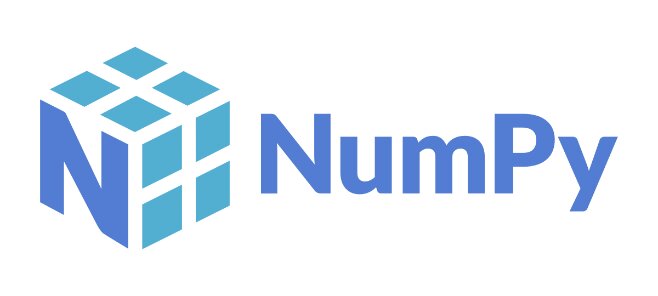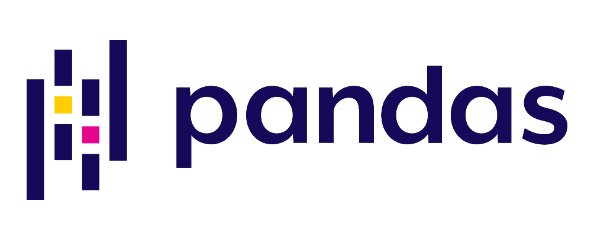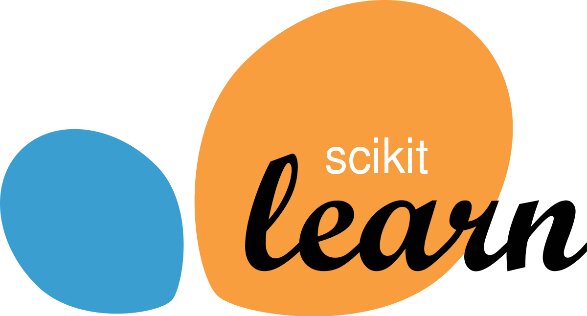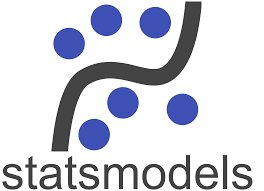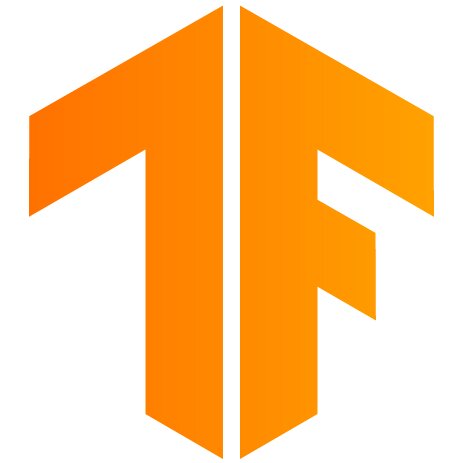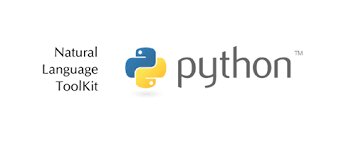Top 10 Powerful Python Libraries for Data Science
In this article, we will discuss top 10 Python Libraries that are used in Data Science namely NumPy, Pandas, Matplotlib, Seaborn, SciPy, Scikit Learn, Statsmodels, TensorFlow, Keras and NLTK.
Python is the fastest-growing programming language in the world right now. It is also arguably the most popular language for Data Science, and rightly so. It is powerful and efficient and offers some of the most functional libraries that help make everyday data science tasks way easier.
In this article, we have curated for you a list of the top 10 powerful Python libraries for data science. We will brief you on these libraries and also discuss their usage and significant features.
Must Check: Python Online Courses & Certifications
Table of Content
Best-suited Python for data science courses for you
Learn Python for data science with these high-rated online courses
NumPy
NumPy (aka Numerical Python) is the core numeric and scientific computation library in Python. It is one of the most fundamental packages that form the pillar of the ecosystem of data science tools.
Features
NumPy offers high-quality mathematical functions and supports logical operations on built-in multi-dimensional array objects.
NumPy arrays are significantly faster than traditional Python lists and way more efficient in performance.
Most data science and machine learning packages that we are going to discuss in this list as well are built on top of this library.
When to use NumPy?
The NumPy library is used to process the homogenous n-dimensional arrays. By homogenous, we mean that these arrays store values of the same data type. You can perform various array manipulation operations on them, such as:
- Basic array operations such as addition and multiplication
- Indexing, slicing, flattening, and reshaping the arrays
- Stacking, splitting, and broadcasting arrays
- Generate random values
Must Check: NumPy Interview Question
Pandas
Pandas is a foundational Python library for data analysis in data science. It is the go-to library for initial data science tasks such as data cleaning, data handling, manipulation, and modeling.
Features
Pandas offer a diverse set of powerful tools for data analysis.
It also provides easy-to-use, high-performance data structures – namely, Series and DataFrames.
These data structures allow us to organize, process, and store data before applying specific types of functionalities to them.
When to use Pandas?
As we have discussed above, the Pandas library is a dedicated library for data wrangling purposes:
- It is designed for efficient data cleaning and quick and easy data manipulation.
- It is used for imputing missing files and handling missing data.
Pandas are used to perform DataFrame operations such as:
- Indexing, sorting, and merging of DataFrames
- Adding, deleting, and updating columns of a DataFrame
Must Check: Pandas Interview Questions for Data Scientists
Matplotlib
Matplotlib is an essential library in Python for data visualization in data science. It is a 2D plotting library that makes producing plots in various formats simple and intuitive.
Data visualization is an important step in a data science process as it helps identify trends and patterns in the data. This library is at the heart of any data-driven decision a data scientist makes.
Features
Matplotlib is capable of producing high-quality figures in various formats. It offers interactive cross-platform environments for plotting.
It provides a MATLAB-like interface for simple plotting with secondary x-y axis support, and facilitates the creation of subplots, labels, grids, legends, etc.
Matplotlib also allows full control of axes properties, font styles, line and marker styles, and some more formatting entities.
Many other plotting libraries utilize the attributes of Matplotlib to display the plots they generate.
When to use Matplotlib?
Matplotlib can depict a wide range of visualizations with low effort. With Matplotlib, you can create various charts, such as:
- Line plots
- Bar charts
- Histograms
- Pie charts
- Box Plots
- Scatter plots
- Contour Plots
Seaborn
Seaborn is another library in Python for data visualization, and it is based on Matplotlib. In other words, Seaborn is an extension of Matplotlib with advanced features that provide a high-level interface for statistical and graphical analysis in data science.
Features
Seaborn facilitates a variety of advanced visualizations with easier syntax and lower complexity. It is also closely integrated with Panda’s data structures.
Seaborn supports tools for choosing between various color palettes and multi-plot grids that help in determining clear patterns in the data.
It allows automatic estimation and plotting of linear regression models for dependent variables.
When to use Seaborn?
- The Seaborn library is ideal for visualizing relationships among multiple variables.
- Seaborn provides high-level abstractions and the ability to plot multi-plot grids.
- It enables easier analysis of datasets with categorical variables.
- It helps in analyzing univariate and bivariate distributions.
SciPy
SciPy (aka Scientific Python) is a scientific computation library in Python. It is widely used in machine learning and scientific programming and comes with integrated support for linear algebra and statistics.
Features
SciPy is essentially a machine learning library in data science. NumPy arrays are used as the basic data structure in SciPy. Hence, it can efficiently handle mathematical as well as scientific operations.
It offers support for signal processing and numerical routines such as integration and optimization.
When to use SciPy?
- SciPy is used in multi-dimensional image processing.
- It also offers functionalities to solve Fourier transforms and differential equations.
Scikit-learn
Scikit-learn is a robust machine learning library in Python. It is a part of the SciPy stack and supports related scientific computations as well. It is mainly used to perform data mining and feature engineering, alongside training and deploying machine learning models.
Features
The Scikit-learn library features a range of simple and efficient tools for data analysis and mining tasks in data science.
It offers support for:
- Supervised machine learning algorithms –
- Classification algorithms such as Naïve Bayes and KNN
- Regression algorithms such as Linear Regression
- Unsupervised machine learning algorithms –
When to use Scikit-learn?
Scikit-learn features a variety of algorithms and applications during machine learning model development using Python, some of which are:
- Predicting categorical data using classification algorithms.
- Drug diagnosis and customer segmentation using clustering algorithms.
- Improving the performance of ML models.
- Preparing the input data for processing with ML algorithms.
- Effective predictive analysis.
Statsmodels
The Statsmodels library is part of the scientific stack in Python for data science. It is a dedicated library that provides functionalities for descriptive and inferential statistics for statistical models.
Features
Statsmodels makes the comparison between models easier by returning an extensive list of result statistics. It is built on top of NumPy and SciPy and integrates well with Pandas for data handling.
When to use Statsmodels?
- Statsmodels is hands down the best library to train time series models. However, cannot do that with deep learning algorithms
- It is used to simplify statistical data exploration, estimate statistical models, and perform statistical tests.
TensorFlow
This is the ultimate machine learning and deep learning framework in Python that features in every stage of your data science project, right from data pre-processing to the model deployment stage. Its primary intent is to develop, train and design deep learning models.
Features
TensorFlow helps data scientists working with AI create large-scale deep neural networks with multiple layers.
It also facilitates deep learning models and allows efficient deployment of AIML-powered applications.
TensorFlow supports production prediction at scale, with the same models used during the training phase.
It has a flexible architecture and allows deployment on any target – be it a local machine, iOS devices, or GPUs, without rewriting the code.
When to use TensorFlow?
TensorFlow finds its usage in a wide range of applications, such as:
- Voice and sound Recognition using IoT. Think of Siri and Alexa.
- Text-based apps such as Google Translate.
- Facial Recognition such as smart unlocks on iPhones.
- Recommendation Systems. Netflix recommends movies based on this.
- Real-time motion detection, such as security cameras at airports.
Keras
Keras is a neural network Python library for deep learning model development, training, and deployment. It offers support for almost all neural network models, such as convolutional, fully connected, embedding, pooling, and recurrent networks.
Features
Keras is built for Python, which makes it easier to debug and explore. However, when compared to other ML libraries in Python, Keras is slow.
It is a lot more user-friendly, modular, and extendable than TensorFlow.
All Keras models are portable.
With the help of Keras, neural network models can be combined to develop more complex models.
It runs on top of TensorFlow, Theano, and CNTK (Microsoft’s Cognitive Toolkit).
When to use Keras?
- Keras finds its applications in image and text data processing tasks.
- It is used to create custom function layers in neural networks.
- Keras is used to compute loss functions and determines percentage accuracy.
- It provides great utilities for processing datasets, visualizing graphs, compiling models, and much more.
NLTK
NLTK (Natural Language Tool Kit) is a Python package essentially for natural language processing. It is actually a set of libraries that contain text processing capabilities for tokenization, parsing, classification, stemming, and tagging of data.
Features
NTLK facilitates training and research of NLP and the related fields of linguistics or cognitive science AI.
It supports lexical analysis in NLP.
With NLTK, you do not need to create your own stop words list for your NLP project, as it offers a predefined list.
When to use NLTK?
NTLK is used for natural language processing tasks of sentiment analytics, chatbots, automatic summarization, and recommendations.
Conclusion
Python has skyrocketed in popularity since the advent of artificial intelligence and machine learning. One of the major reasons for its immense attraction is the plethora of libraries and packages it has to offer. Hope this article provided you with useful insights on the most famous Python libraries and their usage in the data science world.
Top Trending Articles:
Data Analyst Interview Questions | Data Science Interview Questions | Machine Learning Applications | Big Data vs Machine Learning | Data Scientist vs Data Analyst | How to Become a Data Analyst | Data Science vs. Big Data vs. Data Analytics | What is Data Science | What is a Data Scientist | What is Data Analyst
This is a collection of insightful articles from domain experts in the fields of Cloud Computing, DevOps, AWS, Data Science, Machine Learning, AI, and Natural Language Processing. The range of topics caters to upski... Read Full Bio



